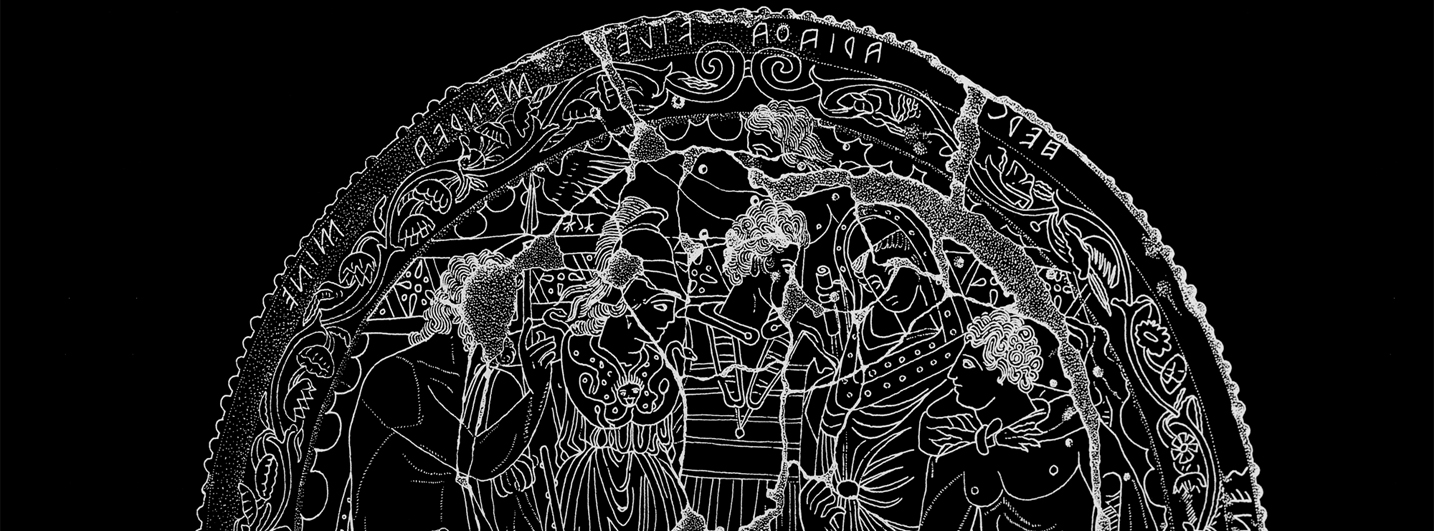
by Paola Moscati
“Automatisation of Etruscan corpora” is the title of a research project which was sponsored by the Centro Linceo Interdisciplinare di Scienze Matematiche e loro Applicazioni in the early 1980s and was then carried on at the Centro di Studio per l’Archeologia Etrusco-Italica of the Italian National Research Council, under the guidance and support of Massimo Pallottino and Mauro Cristofani. The main purpose was to put to the test new computer-based methods in order to investigate and classify homogeneous groups of artefacts belonging to the Etruscan civilisation. The work began thanks to a Lincei scholarship promoting the use of computers in scientific research. The first experiments were carried out in the laboratory located under the Palazzina dell’Auditorio in the Villa Farnesina, where a group of research fellows coming from diverse disciplines (biology, physics and archaeology) could discuss and work through remote terminals connected to a Sperry UNIVAC 1100 mainframe at the Centro Interdipartimentale per il calcolo scientifico of the University of Rome “La Sapienza”.
In the 1980s in Italy the application of statistical techniques was already widespread in prehistoric studies, but hardly applied to classical archaeology. The quantitative approach mostly focused on the artefacts’ specific formal characteristics as well as their spatial and chronological distribution. Our main goal, however, was to apply descriptive and multivariate statistics in order to investigate not only technological and typological aspects but also style and iconography, as markers of historical, cultural, and social changes. The research started with the analysis of about 1,000 Etruscan bronze mirrors and continued, in the following years, with the Volaterrae project aimed at analysing and classifying the stone cinerary urns produced in Volterra in the Hellenistic period. Statistical analyses were conducted using SPSS (Statistical Package for the Social Sciences) and SPAD (Système Portable pour l’Analyse des Données).
Both projects capitalised on previous systematic studies: the Gerhard’s 19th-century monumental corpus of Etruscan mirrors (Etruskische Spiegel) – resumed at the end of the 1970s through the Corpus Speculorum Etruscorum worldwide research project – and the Corpus delle urne etrusche di età ellenistica, launched in 1977 by Mauro Cristofani in the wake of a renewed interest in the Etruscan urns, seventy years after the last volume of I rilievi delle urne etrusche (1870-1916) edited by E. Brunn and G. Körte.
Statistical results on bronze mirrors were published in the Centro Linceo editorial Series. In particular, the study of the objects’ iconography yielded interesting results on frequency and distribution of mythological figures, whose names are sometimes inscribed on the mirrors, giving important information also on the Etruscan alphabet and writing. As a result, statistical analysis revealed that female figures, such as Menerva (Athena) and Turan (Aphrodite), stand out quantitatively compared to other important deities in the Etruscan pantheon, such as Tinia (Zeus), as also do mythical episodes (the Judgment of Paris, Helen’s loves, amorous abductions) and daily life scenes illustrating the routines of self-embellishment, all associated with the mundus muliebris.
In addition, statistical tests demonstrated a significant relationship between figures coming from both the Etruscan and Greek mythological worlds, through the participation of typical Etruscan mythological figures in scenes of Greek origin, such as the birth of Menerva from Tinia head, as well as the transposition of typical Greek deities in local Etruscan myths, resulting in new and original episodes, such as Uni (Hera) breastfeeding Hercle (Herakles). By regrouping the mirrors in a series of homogeneous clusters, some suggestions on the spatial-temporal workshops distribution were also proposed.
The Volaterrae project envisaged the subdivision of the corpus of data into two subgroups consisting of lids and chests. Statistical analysis was then conducted on about 1,200 chests formally described through quantitative and qualitative variables. Descriptive and multivariate analyses of the repertory of scenes carved on the front of the chests allowed us to verify both the interrelationship between morphology and iconography and the chronological dissemination of mythological or funerary themes. Formal description of architectural mouldings, which were considered in the literature as distinctive trademarks of single workshops, helped to verify the interrelationship between lower and upper frames and to detect some manufacturing techniques relying on the stone-carving of local craftsmen.
Particular attention was also devoted to a group of scenes related to the Etruscan funerary world representing the “journey to the underworld”. Quantitative analysis revealed the elements characterising the standardised production (e.g. the chests representing the dextrarum iunctio scene, a typical symbol of the eternal union of the couple in the afterlife, or the journey to the underworld in carpentum) in comparison with the production marked by greater variety, higher manufacturing quality, richness in framing decoration (e.g. the chests representing the journey to the underworld in a four-horse chariot or the procession of a magistrate) that underline the will of the deceased to celebrate his civil function.
Both projects made use of descriptive statistical techniques (frequency analysis, chi-squared test, t-test, etc.) in order to obtain a detailed picture of each variable. More complex was the application of multivariate statistical techniques. In particular, exploratory data analysis, through the integration of automatic classification (Cluster Analysis) and data reduction techniques (Correspondence Analysis and Principal Components Analysis), generated as a result an epistemological process intended to infer new information on the most distinctive characteristics of each class of artefacts. At a later stage, issues such as variability, redundancy, missing information, and uncertainty, that, typically, archaeology has often to deal with, were the starting point for overcoming the constraints of the presence/absence coding and for promoting, in the case of the urns, a textual, formal description of iconographical information (e.g. the sequence of architectonical mouldings on the frames) and stylistic data (e.g. the description of drapery, hairstyle and gestures of the deceased lying on the lids) in order to detect their semantic relationships.
VMAC – 2016